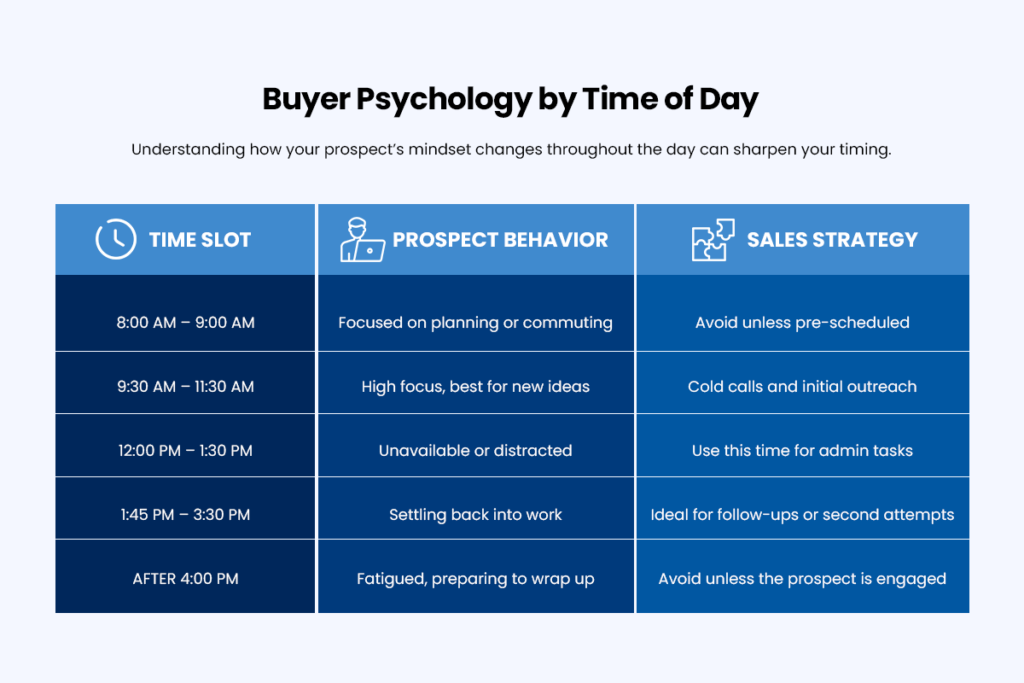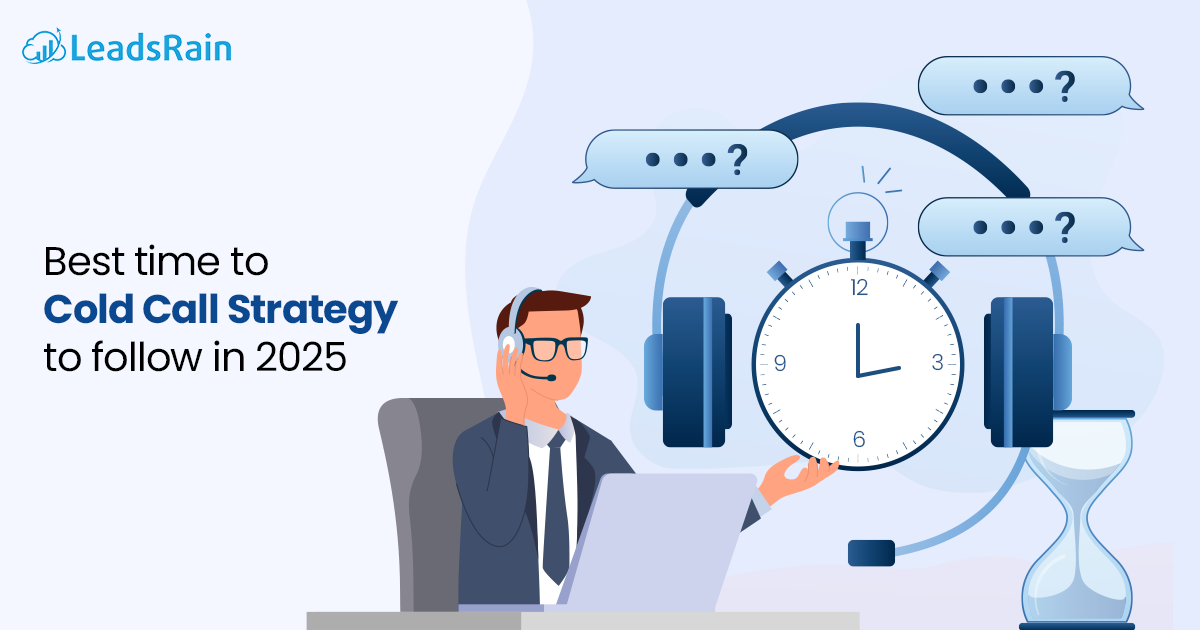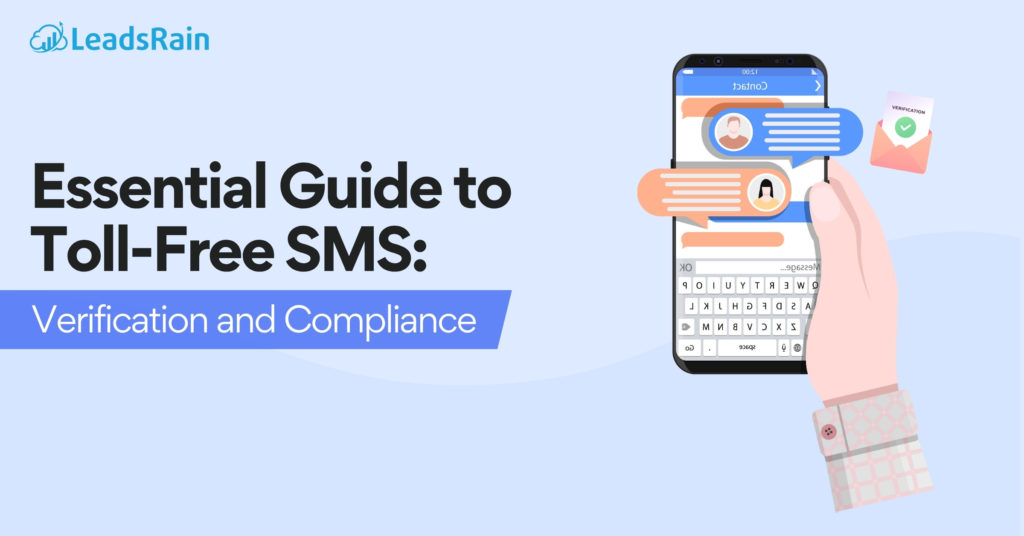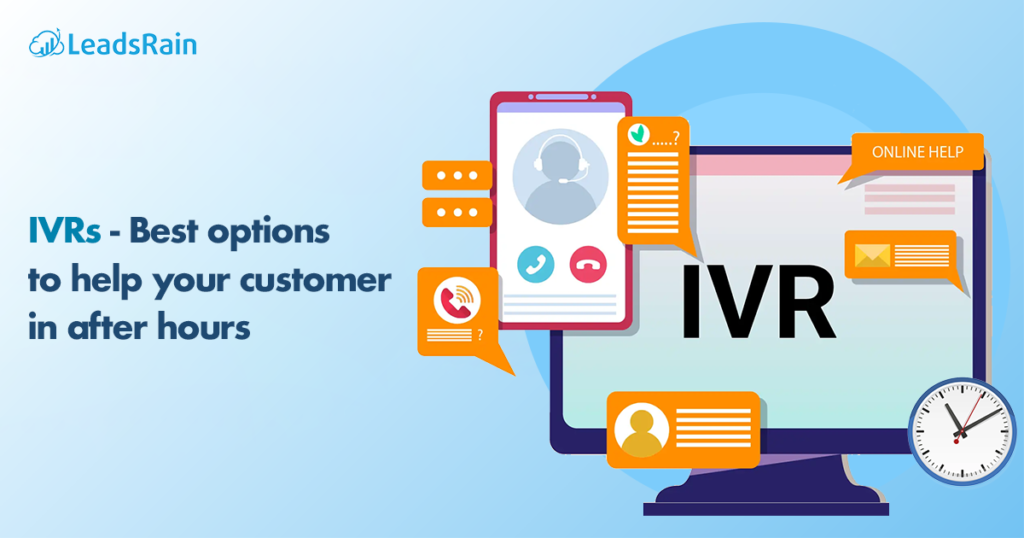Cold calling remains a vital part of the B2B sales toolkit, even in 2025. Despite the rise of AI-driven email outreach and automated sales funnels, one-on-one phone conversations continue to offer unmatched immediacy, personalization, and conversion potential. However, one key factor determines whether your cold call results in a conversation or a click to voicemail — timing.
In this article, we’ll break down the best times to cold call for B2B sales based on current data, buyer behavior patterns, and CRM trends. Whether you’re a seasoned sales rep or scaling a team, understanding these time windows will help you reach more decision-makers and close more deals.
Why Timing is Critical in Cold Calling?
Timing isn’t just a minor detail — it’s a determining factor. Several studies show that your call’s timing directly affects your connection rate, conversation quality, and booking potential. Research from platforms like Gong, HubSpot, and Salesforce consistently shows that calls placed at optimal times have up to twice the success rate compared to poorly timed ones.
A decision-maker’s availability and mental state fluctuate throughout the day. Hitting the right moment means less resistance, more attention, and a higher chance of a positive outcome.
Best Days of the Week to Cold Call
Not all weekdays are created equal when it comes to cold calling. In 2025, sales teams are relying on real-time data and behavioral trends to pinpoint which days deliver the highest connection and conversion rates. With shifting workflows, remote flexibility, and calendar overload, knowing the most productive days to reach out can help you avoid voicemail traps and maximize engagement with key decision-makers.

Tuesday, Wednesday, and Thursday
These middle-of-the-week days are consistently ranked as the most productive for outbound sales.
- Tuesday has the highest connect rates as professionals settle into their week.
- Wednesday often yields the most qualified meetings.
- Thursday performs well for finalizing interest and setting appointments.
Avoid Monday Mornings and Friday Afternoons
- Monday mornings are filled with planning, internal stand-ups, and email backlog.
- Friday afternoons see low productivity and decision fatigue, making sales calls less welcome.
Best Time of Day to Cold Call in 2025
Choosing the right time of day to cold call can make the difference between a conversation and a missed opportunity. In 2025, as work patterns continue to shift with hybrid models and AI-assisted schedules, sales reps must be more precise than ever. Decision-makers are bombarded with tasks, meetings, and messages, making their availability highly variable throughout the day. Knowing when they’re most likely to answer—and engage—can significantly boost your connect and conversion rates.
Morning: 9:30 AM to 11:30 AM (Local Time)
This is widely considered the most effective time slot. By 9:30 AM, most prospects have reviewed their emails, handled urgent matters, and are more likely to take unscheduled calls.
- Best window: 10:00 AM to 10:45 AM
- Why it works: Cognitive performance peaks mid-morning. Prospects are alert and not yet overwhelmed by the day.
- Industries that benefit most: B2B SaaS, financial services, professional services
Avoid Early Morning: 8:00 AM to 9:00 AM
While some early risers may be available, most professionals are commuting, checking emails, or in internal meetings. This time window often leads to voicemail or short, distracted conversations.
Afternoon: 1:45 PM to 3:30 PM
The post-lunch window provides another solid opportunity to connect. By this point, many decision-makers have cleared earlier meetings and are back to focused work.
- Best window: 2:00 PM to 2:45 PM
- Why it works: Light energy dip, but availability is decent. Good for qualification calls or follow-ups.
Avoid Midday and Late Afternoon: 12:00 PM to 1:30 PM and after 4:00 PM
The lunch hour is typically booked for internal catch-ups or breaks. After 4:00 PM, professionals begin closing out their day. Calls during these times often feel like interruptions and have low connect rates.
Combining Cold Calling with Multi-Channel Outreach
Cold calling in 2025 is most effective when it’s part of a broader, coordinated outreach strategy. Buyers today are inundated with communication across channels, and relying solely on calls can limit your reach. By combining phone outreach with email, LinkedIn, and SMS, you create multiple touchpoints that increase familiarity, trust, and response rates. Timing these interactions around your calling schedule helps warm up leads before the call and reinforce the message afterward. This approach not only improves connect rates but also enhances the overall sales experience for the prospect.
Key touchpoint tactics to pair with cold calls:
- Send a personalized email 20–30 minutes before the call to warm up the prospect
- View or interact with the prospect’s LinkedIn profile the day before outreach
- Drop a LinkedIn message if your call goes unanswered
- Follow up missed calls with a brief, relevant SMS within 10 minutes
- Use voicemail as a bridge to a follow-up email or text
- Include your calendar link in post-call emails to ease appointment booking
- Coordinate sequences in tools like Outreach.io or HubSpot for consistency
Industry-Specific Cold Calling Timing
Not all industries operate on the same schedule, and understanding the rhythms of your target vertical can significantly boost your cold calling effectiveness in 2025. From high-velocity tech startups to traditional legal practices, each sector has peak hours when decision-makers are more likely to pick up and engage. Customizing your outreach based on industry workflows shows professionalism and improves your odds of a meaningful conversation. Below are key industries and their optimal calling windows—along with insights into why these timeframes work best.
Technology (SaaS, IT Services, Startups)
Best time: 10:00 AM – 11:30 AM & 2:00 PM – 4:00 PM
Tech professionals often start their mornings deep in focused work or team standups. Late morning and mid-afternoon windows tend to be open for external conversations, especially for growth or product-related roles.
Healthcare (Clinics, Private Practices, Medical Equipment Sales)
Best time: 12:30 PM – 2:00 PM
Doctors and administrators are busiest during morning appointments. Lunch hours or early afternoon—when clinics reset for the second half of the day—are ideal for outreach.
Finance (Banks, Insurance, Accounting)
Best time: 9:00 AM – 10:30 AM & 1:30 PM – 3:00 PM
Financial professionals are most receptive just after they’ve cleared morning email or after post-lunch briefings. Avoid calling during quarter-end or tax season crunch hours.
Legal (Law Firms, Attorneys, LegalTech)
Best time: 11:00 AM – 12:30 PM
Attorneys often spend early mornings in court or reviewing documents. Late morning is when they’re more likely to take calls before diving into case work or meetings.
Manufacturing & Industrial
Best time: 7:30 AM – 9:00 AM
Plant managers and procurement leads start early. Catching them before the day’s operations ramp up is key, as they become less accessible after mid-morning.
Education (K-12, Higher Ed, EdTech Buyers)
Best time: 10:00 AM – 11:00 AM & 2:00 PM – 3:30 PM
Educators and administrators are typically in classes or meetings during early morning and lunch. Late morning and mid-afternoon are optimal windows for engagement.
Real Estate (Commercial & Residential Brokers)
Best time: 8:30 AM – 10:00 AM & 4:00 PM – 6:00 PM
Agents are often on-site or in transit during the day. Early mornings and late afternoons—especially post-showings—are your best shot to connect directly.
Technology and Tools to Improve Cold Call Timing
Timing your cold calls right isn’t just guesswork anymore—modern sales tech has made it a science. In 2025, successful B2B sales teams rely on data-driven tools that track engagement windows, monitor buyer behavior, and automate outreach schedules.
From AI-powered dialers to CRM-integrated workflows, having the right tech stack helps you call smarter, not harder. And among the leaders in this space is LeadsRain, a platform built to optimize contact strategies with precision.
Why LeadsRain Stands Out:
LeadsRain offers cloud-based solutions like predictive dialers, voice broadcasting, and ringless voicemail drops that let you reach your audience at just the right time—without interrupting their day. Its smart scheduling, contact analytics, and CRM syncs help you reach leads when they’re most likely to engage.
Whether you’re scaling an outbound campaign or enhancing rep productivity, LeadsRain gives your team the power to move faster and close more.
Other Essential Tools to Consider:
- Flowup.com – Automates multichannel follow-ups across calls, texts, emails, and voicemail drops; perfect for sequencing and timing outreach without the manual legwork
- Calendly – Simplifies scheduling by letting prospects pick call times based on their availability
- LinkedIn Sales Navigator – Helps you time outreach based on your prospects’ latest activities and engagements
- HubSpot CRM – Offers insights on when leads open emails or visit your site, helping you align calls with buyer intent
Summing it up
Succeeding with cold calling in 2025 means knowing when to reach out, who to target, and which tools give you the edge. Smart timing combined with multi-channel support and industry insight can turn cold leads into qualified conversations that actually move the needle.Looking to fine-tune your strategy with powerful automation and real-time precision? The experts at LeadsRain are ready to support your outreach goals. Drop us a message at support@leadsrain.com — we’re here to help you connect better and close faster.




